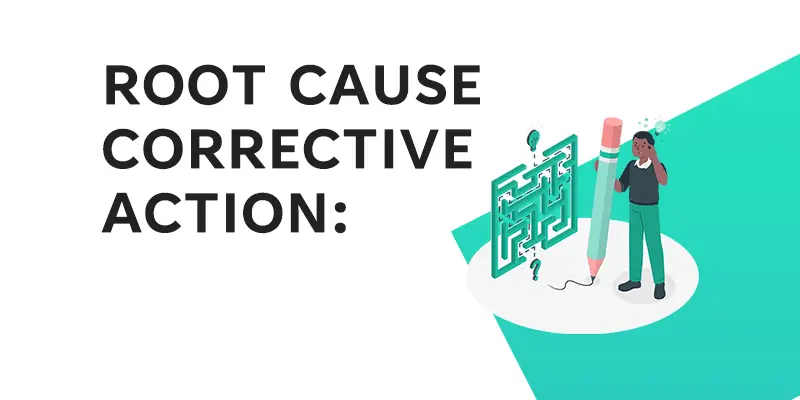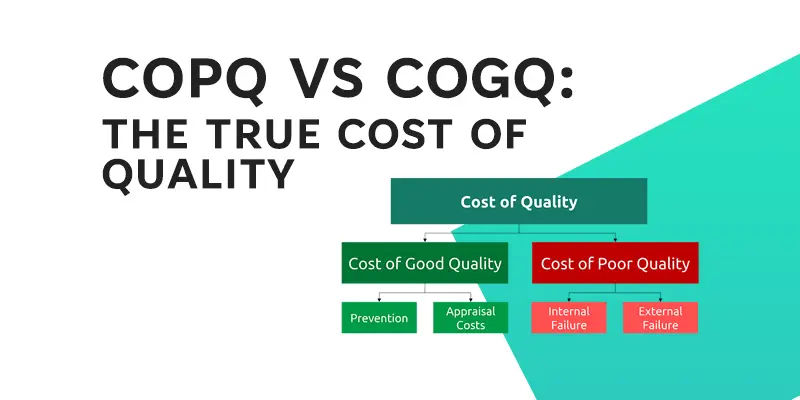Problems and issues are unavoidable in any organization. While quick fixes and temporary solutions are common, they frequently fail to address the root cause of the problem. This results in recurring issues, squandered resources, and disgruntled stakeholders. This is where root cause analysis comes in. Understanding and applying root cause analysis can help you transform problem-solving approaches and achieve long-term solutions that eliminate the root cause of problems.
What is Root Cause Corrective Action
Root cause corrective action is a method of identifying and addressing the underlying causes of a problem rather than just treating the symptoms. It entails determining the root cause, which is the primary reason for the occurrence of an issue or failure. The goal of root cause corrective action is to implement targeted and effective solutions that eliminate the root cause of the problem, thereby preventing it from recurring in the future. It goes beyond quick fixes or temporary solutions, focusing on long-term and sustainable solutions.
How it Differs from Other Problem-Solving Techniques
In several ways, root cause corrective action differs from traditional problem-solving approaches. In contrast to traditional methods, which frequently address the symptoms or immediate effects of a problem, root cause corrective action seeks to identify and address the underlying cause. Traditional approaches may provide temporary relief, but if the underlying cause is not addressed, they can lead to recurring problems.
A systematic and structured analysis of the problem, taking into account all possible contributing factors, is required for root cause corrective action. It delves deeper into the causes, looking beyond the obvious. By determining the root cause, organizations are able to implement targeted solutions that address the source of the problem rather than applying general fixes that may not fully resolve the issue.
Importance of Root Cause Corrective Action in Preventing Recurring Issues
One of the fundamental principles of root cause corrective action is the recognition that addressing a problem at its source is critical to preventing its recurrence. Addressing symptoms or superficial manifestations without addressing the underlying cause can lead to a never-ending cycle of problems.
Organizations can break free from recurring issues and create a more stable and efficient operation by emphasizing the need to identify and eliminate the root cause. It helps to avoid wasting resources and time dealing with the same problem over and over again. Organizations can reap long-term benefits such as increased productivity, improved customer satisfaction, and cost savings by putting effort into identifying and addressing the root cause.
Benefits of Implementing Root Cause Corrective Action
Implementing root cause corrective action has numerous advantages, the most important of which is the ability to achieve long-term solutions. Organizations can prevent a problem from recurring by identifying and addressing its root cause, resulting in long-term solutions. Rather than applying temporary fixes over and over, root cause corrective action offers a comprehensive approach that ensures problems are resolved at their root.

Assume a manufacturing company experiences frequent equipment breakdowns. Instead of constantly repairing the equipment, root cause corrective action would entail investigating the underlying causes of the breakdowns, such as insufficient maintenance procedures or worn-out components. Addressing these underlying causes allows the company to implement measures to improve maintenance practices or replace faulty components, resulting in fewer equipment failures and long-term operational stability.
Cost and Time-saving Advantages of Addressing Root Causes
Addressing the underlying causes of a problem through corrective action results in significant cost and time savings. While conducting a thorough root cause analysis and implementing appropriate solutions may require an initial investment of resources, it ultimately leads to significant savings in the long run.
Organizations can eliminate the need for recurring fixes and associated costs such as maintenance, repairs, or customer compensation by addressing the root cause. Furthermore, by preventing the problem from recurring, valuable time spent on firefighting or dealing with customer complaints can be redirected to more productive activities, improving overall efficiency.
Examples of Successful Root Cause Corrective Action
Showcasing real-life examples can provide valuable insights into the effectiveness of root cause corrective action. These examples demonstrate how organizations identified the underlying causes of their problems and implemented targeted solutions, resulting in significant improvements.
For example, a software development firm that experienced frequent software crashes implemented root cause corrective action. They discovered that the crashes were caused by a memory leak in their code after careful investigation. They were able to achieve stable software performance by addressing the root cause and optimizing their code, resulting in increased customer satisfaction and lower support costs.
Another example could be a logistics company experiencing delivery delays. They identified bottlenecks in their supply chain caused by inefficient warehouse processes after conducting a root cause analysis. They successfully eliminated the root causes of delays by reorganizing their operations, implementing automation, and improving inventory management, resulting in faster and more reliable deliveries.
These examples show how root cause corrective action can produce tangible results by addressing issues at their root and achieving long-term improvements.
Steps to Implementing Root Cause Corrective Action
Step 1: Conducting a Root Cause Analysis
Conducting a thorough root cause analysis is the first step in implementing effective root cause corrective action. This entails gathering pertinent data and information about the problem, investigating the sequence of events that led to its occurrence, and investigating any contributing factors. To delve deeper into the underlying causes, techniques such as the “5 Whys” or fishbone diagrams can be used. The goal is to identify the primary cause or causes that, if addressed, will result in the problem being resolved.

Step 2: Identifying the Underlying Factors Contributing to the Problem
After determining the root cause, the next step is to identify the underlying factors that contribute to the problem. This entails investigating the various elements, processes, or systems that interact with one another and influence the occurrence of the problem.

It necessitates a thorough examination of the organizational environment, including equipment, procedures, human factors, and external influences. Organizations can gain a holistic understanding of the problem and develop effective solutions by identifying all relevant factors.
Step 3: Developing and Implementing Targeted Corrective Actions
After determining the root cause and contributing factors, the next step is to devise targeted corrective actions. This entails developing strategies and solutions that are specifically designed to address the underlying cause and mitigate the contributing factors. Depending on the nature of the problem, it may entail process improvements, training programs, policy changes, or infrastructure upgrades. Corrective actions must be actionable, realistic, and targeted in order to effectively eliminate the root cause and prevent its recurrence.
Step 4: Monitoring and Evaluating the Effectiveness of the Corrective Actions
Following the implementation of targeted corrective actions, it is critical to monitor and evaluate their effectiveness. This step entails developing metrics, key performance indicators (KPIs), or other measurable criteria to evaluate the effectiveness of corrective actions. Organizations can track progress, identify unexpected outcomes, and make adjustments as needed with regular monitoring. It is critical to involve stakeholders and solicit feedback to ensure that the solutions implemented achieve the desired results. If the corrective actions are not proving effective, the root cause analysis may need to be reassessed and alternative strategies considered.
Organizations can implement effective root cause corrective action by following these steps, resolving problems at their core and creating long-term solutions. Conducting a thorough root cause analysis, identifying contributing factors, developing targeted corrective actions, and monitoring their effectiveness are critical to addressing the root cause and preventing recurring issues.
Case Study: Examples of Root Cause Corrective Action
To better understand the practical application of root cause corrective action, consider the following case study.
Reducing Customer Complaints in a Call Center Case Study
Problem: A call center was receiving a high volume of customer complaints about long wait times and inadequate issue resolution. Customers were dissatisfied, customer loyalty was low, and word-of-mouth was negative.
Actions Taken:
Root Cause Analysis: The call center management performed a root cause analysis to identify the underlying causes of the customer complaints. They conducted customer and call center agent interviews, analyzed call data, and reviewed customer feedback.
Identified Root Causes: The analysis revealed two primary root causes: insufficient staffing during peak hours and inadequate agent training in issue resolution and customer service skills.
Targeted Corrective Actions:
- a. Staffing Increase: To reduce wait times and improve customer service, call center management increased the number of agents available during peak hours. This included changing shift schedules, hiring more people, and implementing workload balancing mechanisms.
- b. Training Improvement: A comprehensive training program was developed to provide agents with the necessary skills to effectively handle customer issues. To ensure positive customer experiences, this training focused on active listening, problem-solving, and empathetic communication.
- c. Positive Word-of-Mouth: As customers experienced better service, positive word-of-mouth spread, attracting new customers and improving the company’s market reputation. This aided business growth and provided a competitive advantage.
The call center successfully resolved the underlying issues causing customer complaints by implementing root cause corrective action through targeted solutions such as staffing improvements and training enhancements. This case study demonstrates how identifying root causes and putting effective corrective actions in place can result in significant improvements that benefit both the organization and its customers.
Overcoming Challenge in Root Cause Corrective Action
Implementing root cause corrective action can be difficult at times due to a variety of obstacles. We’ll talk about common problems and how to solve them here:
- Limited Resources: One common obstacle is the availability of limited resources, such as time, budget, or personnel. To address this, prioritize the most pressing issues and allocate resources accordingly. Effective resource management and careful planning can assist in making the best use of available resources.
- Inadequate or Incomplete Data: Insufficient or incomplete data can impede root cause analysis. Ensure that data collection processes are in place and that employees are encouraged to report incidents or problems as soon as possible. Consider using tools or systems to collect relevant data for a thorough analysis.
- Resistance to Change: Another challenge is resistance to change, especially if the root cause corrective actions involve changing established processes or routines. Address resistance by communicating effectively, emphasizing the benefits of the changes, and involving stakeholders in the decision-making process. To ease the transition, provide employees with training and support.
Overcoming Resistance and Organizational Barriers
Overcoming resistance or organizational barriers is critical for successful root cause corrective action implementation. Here are some strategies for overcoming these obstacles:
Create a Culture of Continuous Improvement: Encourage employees to actively participate in problem-solving efforts by cultivating a culture that values continuous improvement. Establish clear communication channels and give employees opportunities to contribute ideas and feedback.
Build Cross-Functional Collaboration: Promote cross-functional collaboration within the organization to break down silos. Encourage departments or teams to collaborate on problem analysis and solution development. This promotes a holistic viewpoint and ensures a thorough understanding of the underlying causes.
Training and Support: Provide training programs to employees in root cause analysis and problem-solving methodologies. Maintain ongoing support, guidance, and resources to assist employees in overcoming obstacles and implementing effective corrective actions.
Tips for Ensuring Sustained Commitment
Long-term success requires a consistent commitment to root cause corrective action. Consider the following suggestions to keep the momentum going:
- Leadership Support: Obtain leadership buy-in and support for root cause corrective action implementation. Leaders must champion the process, allocate resources, and emphasize the importance of identifying and addressing root causes.
- Continuous Monitoring and Evaluation: Establish mechanisms to continuously monitor the effectiveness of implemented corrective actions. Evaluate outcomes on a regular basis and adjust strategies as needed. This fosters a learning and improvement culture.
- Recognize and Celebrate Success: Recognize and celebrate successful root cause corrective action implementations. Individuals or teams who contribute to identifying and resolving root causes should be recognized. This increases motivation and reinforces the importance of the approach.
- Continuous Training and Development: Provide ongoing training and development opportunities to employees to help them improve their skills in root cause analysis and problem solving. Encourage employees to constantly improve their problem-solving skills and to share what they’ve learned with others.
Organizations can effectively implement root cause corrective action by addressing common obstacles, overcoming resistance, and ensuring sustained commitment. This paves the way for long-term success, continuous improvement, and problem prevention.
Conclusion
Implementing root cause corrective action is a powerful approach that shifts problem-solving from addressing symptoms to resolving core issues. Organizations can achieve long-term solutions and reap numerous benefits by conducting thorough root cause analyses, identifying underlying factors, developing targeted corrective actions, and monitoring their effectiveness.
The impact of root cause corrective action is far-reaching, ranging from cost and time savings to increased customer satisfaction and loyalty. Overcoming obstacles and maintaining a long-term commitment to this approach ensures continuous improvement and a proactive problem-solving culture. Accept the power of root cause corrective action to unlock your organization’s potential for transformative change.








